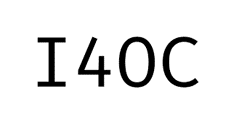Peer Violence During Adolescence: A Systematic Review of Instruments for Spanish Speakers
DOI:
https://doi.org/10.18050/psiquemag.v11i2.2106Keywords:
Violence, questionnaires, evaluation, adolescence, literature reviewsAbstract
Peer violence that occurs in adolescence is a problem that has negative effects on all individuals involved. The main objective of this systematic review was to identify the different existing instruments to assess violence among adolescents in a Spanish-speaking context. The methodology used consisted of searching for documents in the Web of Science, Scopus, Eric, Dialnet Plus and Ebsco databases using the search formula "violence AND questionnaire AND adolescents" in Spanish and English. The results have included a total of 14 articles that show a wide variety of instruments for evaluating violence between peers that have been classified into two sections: Instruments for evaluating school violence and instruments for evaluating violence in a relationship. All the questionnaires have been validated in the adolescent population, which shows that they are good tools that allow identifying the existence of violent behaviors among young people, as well as which are the most repeated behaviors. Peer violence should be investigated to establish a series of educational strategies that allow the reduction of this problem in the classroom.
References
Alexander, P.A. (2020). Methodological guidance paper: The art and science of quality systematic reviews. Review of Educational Research, 90(1), 6-23. https://doi.org/10.3102%2F0034654319854352
Álvarez-García, D., Mercedes, J.M., Rodríguez, F.J., y Núñez, J.C. (2015). Adaptación y validación del cuestionario CUVE3-EP para la evaluación de la violencia escolar en centros de enseñanza básica de la República Dominicana. Annals of Psychology, 31(3), 859-868. https://doi.org/10.6018/analesps.31.3.186481
Álvarez-García, D., Núñez, J.C., Barreiro-Collazo, A., y García, T. (2017). Validation of the Cybervictimization Questionnaire (CYVIC) for adolescents. Computers in Human Behavior, 70, 270-281. https://doi.org/10.1016/j.chb.2017.01.007
Álvarez-García, D., Núñez, J.C., Rodríguez, C., Álvarez, L., y Dobarro, A. (2011). Propiedades psicométricas del Cuestionario de Violencia Escolar - Revisado (CUVE-R). Revista de Psicodidáctica, 16(1), 59-83. Recuperado de: https://ojs.ehu.eus/index.php/psicodidactica/article/view/1146
Beserra, M.A., Carlos, D.M., Neto, M., y Carvalho, M. (2019). Prevalence of school violence and use of alcohol and other drugs in adolescents. Revista Latino-Americana de Enfermagem, 27, 33110. http://dx.doi.org/10.1590/1518-8345.2124.3110
Calvete, E., Fernández-González, L., Orue, I., Machimbarrena, M., y González-Cabrera, J. (2021). Validación de un cuestionario para evaluar el abuso en relaciones de pareja en adolescentes (CARPA), sus razones y las reacciones. Revista de Psicología Clínica con Niños y Adolescentes, 8(1), 60-69. https://doi.org/10.21134/rpcna.2021.08.1.8
Cedeño, W.A. (2020). School violence through a theoretical journey through the various programs for its prevention worldwide and in Latin America. Revista Universidad y Sociedad, 12(5), 470-478. Recuperado de: https://rus.ucf.edu.cu/index.php/rus/article/view/1734
Cerda, G., Pérez, C., Elipe, P., Casas, J.A., y del Rey, R. (2019). School Coexistence and Its Relationship with Academic Performance Among Primary Education Students. Revista de Psicodidáctica, 24(1), 46-52. https://doi.org/10.1016/j.psicod.2018.05.001
Cortés, J.I., y Mujica, F.N. (2020). Violencia escolar en educación física: estudio cualitativo en dos centros educativos de Chile. EmásF: Revista Digital de Educación Física, 63, 88-103. http://emasf.webcindario.com/Violencia_escolar_en_educacion_fisica_estudio_cualitativo.pdf
De la Serna-Tuya, A.S., González-Calleros, J.M., y Navarro, Y. (2018). Las Tecnológicas de Información y Comunicación en el preescolar: Una revisión bibliográfica. Campus Virtuales, 7(1), 19-31. http://www.uajournals.com/campusvirtuales/journal/12/2.pdf
Domínguez, J., López, A., y Nieto, B. (2019). Violencia escolar: diferencias de género en estudiantes de secundaria. Revista Complutense de Educación, 30(4), 1031-1044. https://dx.doi.org/10.5209/rced.59997
Etkin, P., Ortet, J., Vidal, V., Ortet, G., y Mezquita, L. (2020). Víctima y verdugo: características de personalidad y psicopatología de los receptores y perpetradores de bullying. Ágora de Salut, 7, 85-93. http://dx.doi.org/10.6035/AgoraSalut.2020.7.9
Fernández-González, L., Calvete, E., y Orue, I. (2017). The Acceptance of Dating Violence scale (ADV): Psychometric properties of the Spanish version. Psicothema, 29(2), 241-246. https://doi.org/10.7334/psicothema2016.229
Garaigordobil, M., Mollo, J.P., y Larrán, E. (2018). Prevalencia de bullying y cyberbullying en Latinoamérica: una revisión. Revista Iberoamericana de Psicología, 11(3), 1-18. https://doi.org/10.33881/2027-1786.rip.11301
Garcés, M., Santoya, Y., y Jiménez, J. (2020). Influence of family and pedagogical communication on school violence. Revista Comunicar, 63, 77-86. https://doi.org/10.3916/C63-2020-07
García-Carpintero, M.A., Rodríguez-Santero, J., y Porcel-Gálvez, A.M. (2018). Diseño y validación de la escala para la detección de violencia en el noviazgo en jóvenes en la Universidad de Sevilla. Gaceta Sanitaria, 32(2), 121-128. https://doi.org/10.1016/j.gaceta.2017.09.006
González, C.M. y Gómez, A. (2020). Violencia escolar percibida en Educación Secundaria. Revista EA: Escuela Abierta, 23, 19-27. http://dx.doi.org/10.29257/EA23.2020.02
Hernández, C.V., y Caso, J. (2017). Adaptación de un Instrumento para la Medición de la Convivencia Escolar en Escuelas de Educación Secundaria de México. Revista Iberoamericana de Evaluación Educativa, 10(1), 131-152. https://doi.org/10.15366/riee2017.10.1.007
Higuita, L.F., y Cardona, J.A. (2017). Validación de una escala de bullying en adolescentes de instituciones educativas de Medellín, Colombia. Educación y Educadores, 20(1), 9-23. https://doi.org/10.5294/edu.2017.20.1.1
León, C., Martínez, B., Musitu, G., y Moreno, D. (2019). Victimization and School Violence. The Role of the Motivation of Revenge, Avoidance, and Benevolence in Adolescents. Revista de Psicodidáctica, 24(2), 88-94. https://doi.org/10.1016/j.psicod.2018.12.001
López, V., y Valdés, R. (2018). Construcción y validación de instrumentos para evaluar prácticas de convivencia escolar en profesionales y padres. Revista Electrónica – Actualidades Investigativas en Educación, 18(3), 1-29. https://doi.org/10.15517/aie.v18i3.34328
Marchal, A.M., Brando, C., Montes, J., y Tomás, J. (2018). Diseño y validación de un instrumento para medir actitudes machistas, violencia y estereotipos en adolescentes. Metas de Enfermería, 21(3), 11-18. https://doi.org/10.35667/MetasEnf.2019.21.1003081206
Mendoza, B. (2014). Los múltiples rostros del acoso escolar (segunda edición). Pax-México.
Molero, M.M., Gázquez, J.J., Pérez-Fuentes, M.C., y Soler, F. (2014). Rendimiento académico y conducta agresiva en estudiantes universitarios. European Journal of Child Development, Education and Psychopathology, 2(2), 69-79. https://doi.org/10.30552/ejpad.v2i2.17
Molero, M.M., Pérez-Fuentes, M.C., Luque, A., Martos, A., Barragán, A., y Simón, M.M. (2016). Interpersonal Values and Academic Performance Related to Delinquent Behaviors. Frontiers in Psychology, 7, 1480. https://doi.org/10.3389/fpsyg.2016.01480
Monelos, M.E., Mendiri, P. y García, C.D. (2015). El bullying: revisión teórica, instrumentos y programas de intervención. Revista de Estudios e Investigación en Psicología y Educación, 2, 74-78. http://dx.doi.org/10.17979/reipe.2015.0.02.1299
Muñoz-Sánchez, H., Azabache-Alvarado, K., y Quiroz, M. (2018). Validez y fiabilidad del Cuestionario de Violencia Escolar para Educación Secundaria CUVE3-ESO en adolescentes peruanos. Journal of Psychology and Education, 13(2), 142-154. https://doi.org/10.23923/rpye2018.01.165
Muñoz, F., Becerra, S., y Riquelme, E. (2017). Elaboración y validación psicométrica del cuestionario de convivencia escolar para la no violencia (CENVI). Estudios Pedagógicos, 43(3), 205-223. http://dx.doi.org/10.4067/S0718-07052017000300012
Olivera, E., y Yupanqui, D. (2020). School violence and family functionality in adolescents at risk of dropping out of school. Revista Científica de la Universidad del Cono Sur de las Américas, 7(3), 3-13. https://doi.org/10.18004/ucsa/2409-8752/2020.007.03.003
Olweus, D. (1977). Aggression and peer acceptance in adolescent boys: two short-term longitudinal studies of ratings. Child Development, 48(4), 1301-1313. https://pubmed.ncbi.nlm.nih.gov/608360/
Olweus, D., y Limber, S. (2018). Some problems with cyberbullying research. Current Opinion in Psychology, 19, 139-143. https://doi.org/10.1016/j.copsyc.2017.04.012
Orozco, A.E., y Mercado, M.R. (2019). Impacto multifacético del ambiente familiar en situaciones de violencia escolar en hombres y mujeres. Psicología Escolar e Educacional, 23, e192847. http://dx.doi.org/10.1590/2175-35392019012847
Ortuño-Sierra, J., García, A., Chocarro, E., Pérez-Sáenz, J., y Aritio-Solana, R. (2021). Attitudes towards Violence in Adolescents and Youth Intimate Partner Relationships: Validation of the Spanish Version of the EAV. International Journal of Environmental Research and Public Health, 18(2), 566. https://doi.org/10.3390/ijerph18020566
Page, M. J., McKenzie, J. E., Bossuyt, P. M., Boutron, I., Hoffmann, T. C., Mulrow, C. D., Shamseer, L., Tetzlaff, J. M., Akl, E. A., Brennan, S. E., Chou, R., Glanville, J., Grimshaw, J. M., Hróbjartsson, A., Lalu, M. M., Li, T., Loder, E. W., Mayo-Wilson, E., McDonald, S.,… Moher, D. (2021). The PRISMA 2020 statement: an updated guideline for reporting systematic reviews. British Medical Journal, 372. https://doi.org/10.1136/bmj.n71
Pedroza, F.J., Aguilera, S.J., Cervantes, A.R., y Martínez, K. (2013). Estabilidad y cambio en roles de agresor y víctima de episodios de bullying. En F.J. Pedroza y S.J. Aguilera (Eds.), La construcción de identidades agresoras: el acoso escolar en México (pp. 49-72). México: CONACULTA
Pérez-Fuentes, M.C., Álvarez-Bermejo, J.A., Molero, M.M., Gázquez, J.J., y López, M.A. (2011). Violencia Escolar y Rendimiento Académico (VERA): aplicación de realidad aumentada. European Journal of Investigation in Health, Education and Psychology, 1(2), 71-84. https://doi.org/10.30552/ejihpe.v1i2.19
Pérez-Fuentes, M.C., Molero, M.M., Martos, Á., Barragán, A.B., Gázquez, J.J., y Sánchez-Marchán, C. (2016). Spanish analysis and validation of Peer Conflict Scale. European Journal of Education and Psychology, 9(2), 56-62. https://doi.org/10.1016/j.ejeps.2016.03.001
Ramírez, G.M., Collazos, C.A., Moreira, F., y Fardoun, H. (2018). Relación entre el U-Learning, aprendizaje conectivo y el estándar xAPI: Revisión Sistemática. Campus Virtuales, 7(1), 51-62. http://www.uajournals.com/campusvirtuales/journal/12/4.pdf
Resett, S. (2011). Aplicación del cuestionario de agresores/víctimas de Olweus a una muestra de adolescentes argentinos. Revista de Psicología de la Universidad Católica Argentina, 7(13), 27-44. http://hdl.handle.net/11336/43293
Rivera, A.M. (2017). Tipología de la Violencia. Fundación Nacional para el Desarrollo. San Salvador, El Salvador.
Rodríguez-Díaz, J.F., Herrero, J., Rodríguez-Franco, L., Bringas-Molleda, C., Paino-Quesada, S.G., y Pérez, B. (2017). Validation of Dating Violence Questionnarie-R (DVQ-R). International Journal of Clinical and Health Psychology, 17(1), 77-84. https://doi.org/10.1016/j.ijchp.2016.09.001
Rodríguez, L.M., y Gallego, M.G. (2018). Bullying, violencia entre iguales y Servicios Sociales. Un análisis desde la perspectiva de estudiantes de Criminología y Educación Primaria. Alternativas. Cuadernos de Trabajo Social, 25, 51-77. https://doi.org/10.14198/ALTERN2018.25.03
Ronzón-Tirado, R.C., Muñoz-Rivas, M.J., Zamarrón, M.D., y Redondo, N. (2019). Cultural Adaptation of the Modified Version of the Conflicts Tactics Scale (M-CTS) in Mexican Adolescents. Frontiers of Psychology, 10, 619. https://doi.org/10.3389/fpsyg.2019.00619
Ruiz-Hernández, J.A., Pina, D., Puente-López, E., Luna-Maldonado, A., y Llor-Esteban, B. (2020). Attitudes towards School Violence Questionnaire, Revised Version: CAHV-28. The European Journal of Psychology Applied to Legal Context, 12(2), 61-68. https://doi.org/10.5093/ejpalc2020a8
San Lucas-Solórzano, C.E., Andrade, S., Rosero, E., Gómez, H., y Armas, S. (2016). De la violencia escolar a la violencia de género: análisis de instrumentos. Ciencias Pedagógicas e Innovación, 4(2), 93-97. https://dx.doi.org/10.26423/rcpi.v4i2.141
Sánchez-Meca, J. (2010). Cómo realizar una revisión sistemática y un meta-análisis. Aula abierta, 38(2), 53-64. https://doi.org/10.17811/rifie.38.1,%202.2010
Sigfusdottir, I.D., Kristjansson, A.L., Thorlindsson, T., y Allegrante, J.P. (2017). Stress and adolescent well-being: The need for an interdisciplinary framework. Health Promotion International, 32(6), 1081-1090. https://doi.org/10.1093/heapro/daw038
Toballino, D., Dolorier, R.G., Villa, R.M., y Menacho, I. (2017). Acoso escolar y autoestima en estudiantes de educación primaria de Perú. Revista Opción, 33(84), 359-377. https://produccioncientificaluz.org/index.php/opcion/article/view/23392/23575
United Nations Educational, Scientific and Cultural Organization (2019). Behind the numbers: ending the school violence and bullying. UNESCO.
Urbiola, I., Estévez, A., e Iraurgi, I. (2013). Violencia sexual psicológica y percepción de la violencia en adolescentes y jóvenes según el cuestionario V.E.R.A. Inguruak: Revista Vasca de Sociología y Ciencia Política, 55, 1424-1433. http://www.civersity.net/files/55-56.pdf
Urrútia, G., y Bonfill, X. (2010). Declaración PRISMA: una propuesta para mejorar la publicación de revisiones sistemáticas y metaanálisis. Medicina clínica, 135(11), 507-511. https://doi.org/10.1016/j.medcli.2010.01.015
Vera, C.Y., Vélez, C.M., y García, H.I. (2017). Medición del bullying escolar: Inventario de instrumentos disponibles en idioma español. Psiencia: Revista Latinoamericana de Ciencia Psicológica, 9(1), 1-16. https://dx.doi.org/10.5872/psiencia/9.1.31
Yepes-Nuñez, J. J., Urrútia, G., Romero-García, M., & Alonso-Fernández, S. (2021). Declaración PRISMA 2020: una guía actualizada para la publicación de revisiones sistemáticas. Revista Española de Cardiología, 74(9), 790–799. https://doi.org/10.1016/j.recesp.2021.06.016
Downloads
Published
How to Cite
Issue
Section
License
Copyright (c) 2022 PsiqueMag

This work is licensed under a Creative Commons Attribution-NonCommercial-NoDerivatives 4.0 International License.
You are free to:
- Share — copy and redistribute the material in any medium or format
- The licensor cannot revoke these freedoms as long as you follow the license terms.
Under the following terms:
-
Attribution — You must give appropriate credit, provide a link to the license, and indicate if changes were made. You may do so in any reasonable manner, but not in any way that suggests the licensor endorses you or your use.












